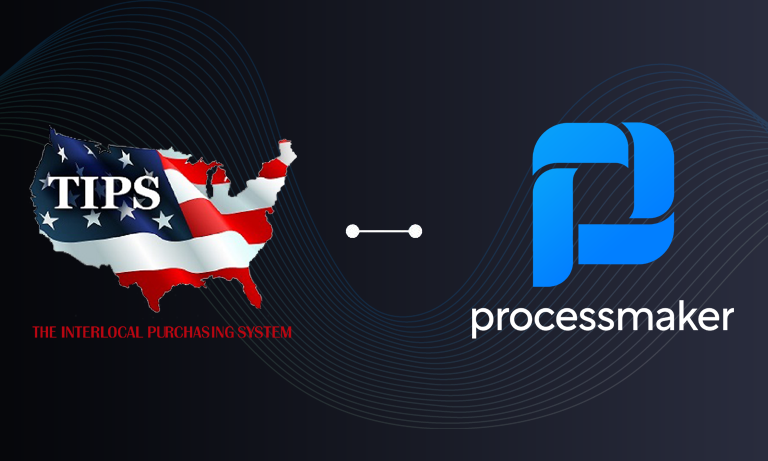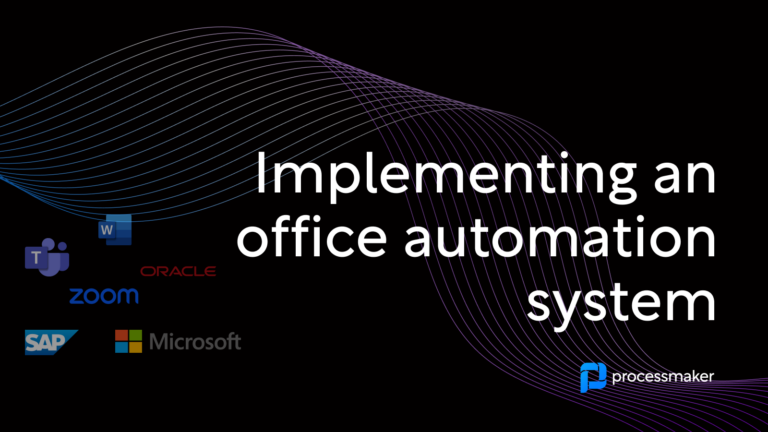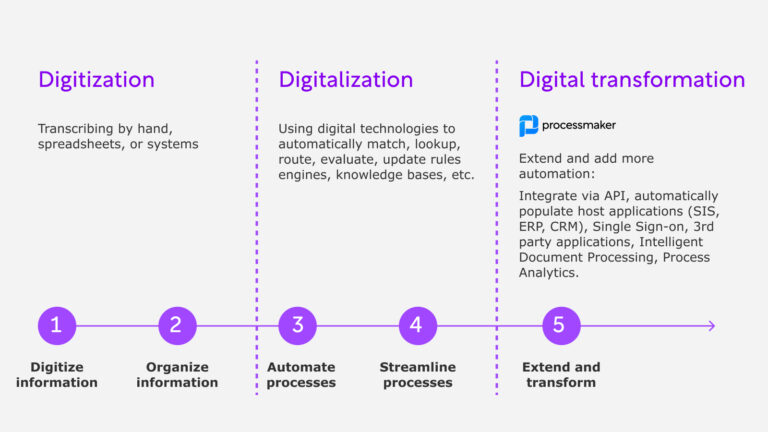When you’re researching ways to improve productivity within your organization, you’re likely to come across two key phrases: business process management (BPM) and workflow automation. If you’re having trouble distinguishing the difference between the two—you’re not alone! It’s a very popular question in the world of process management. Here’s how these two common terms differ and work together.
Key differences between BPM and Workflow Automation
To summarize on higher-level, the main points and differences between the two are:
- Workflow automation is best for organizing documents and people.
- BPM software is best for organizing strategic company wide initiatives; integrating systems, processes, and people.
- BPM suites (including iBPMS), integrate and interact with many different systems (iPaaS, business rules, etc)
- Workflow automation systems are less complex, less scalable and are faster to implement. As such, they are cheaper.
- BPM software is enterprise-ready, scalable, and offers insight into every function of business. As such, is more expensive.
How do workflow automation and BPM work together?
Well-designed workflows are a component of BPM, but a workflow automation refers to one sequence of tasks. Consider a short employee onboarding workflow that includes preparing a parking pass, compiling documents for e-sign, and scheduling a team lunch to welcome a new employee. It’s a series of tasks to get this project done from start to finish.
Through a business process management lens, you can seamlessly incorporate more departments and systems into the process. Submit an employee’s information to the security team for a badge, set up an expense account with the accounting team, and work with IT to grant access to apps and databases.
Your BPM platform also has a detailed understanding of the other workflows moving between each team and can provide powerful insight into how to prioritize effectively. Each of these onboarding tasks involves a host of people and departments, plus a myriad of smaller subtasks, all of which can filter through a BPM system to find the most optimal route to efficiency. BPM is about high-level coordination to help your entire organization run smoothly. It’s a much-needed remedy to disparate processes—after all, organizations lose 20–30% in revenue each year due to inefficiencies.
Workflow automation vs. BPM: Another perspective
Let’s step into the kitchen to compare the two to a common activity we all participate in. Workflows focus on the steps required to make an individual meal. Cooking dinner for one requires very little coordination. You know the recipe, line up a handful of ingredients, and move through a set of motions to get the job done. There’s not much external collaboration involved—you don’t have to consider what’s happening in the living room, or involve your neighbor’s dinner prep in your decision-making process.
But what about cooking multiple meals that all have to arrive at one time? Whether you’ve ever worked in a kitchen, foodie television has given us all a peek behind the curtain into a restaurant’s inner workings. The waitstaff brings orders to the window, where a food expeditor stands between the bar, the main floor, and the kitchen. This individual coordinates with chefs to optimize the priority of orders: which tables should go first? They know how long each meal takes to prepare, as well as the individual components of each order. The expeditor knows how to optimize tasks between the meat station and pasta station. They know when to have chefs start on a sizzling steak and when to give the command to drop spaghetti into a pot of boiling water. Also monitoring a team of dishwashers, the expeditor ensures clean plates and flatware will always be at the ready. If there is a problem on one station, they can reorganize other related tasks to beat a potential bottleneck of backed up orders. Overseeing an entire ecosystem that is in constant motion,
A BPM platform serves as the expeditor for all workflows whirring through your business. It’s a centralized ‘brain’ that understands all of the tasks and workflows churning through your organization. The technology also provides a crystal clear window into how things are connected. This crystal clear window arms you with reports and analytics so you can adjust seemingly disparate activities based on the progress of others, and continuously optimize.
BPM offers a bigger picture
In BPM, the power ‘M’ stands for management. It’s all about how to better manage an organization by not just monitoring, but by continuously improving in an unrelenting pilgrimage towards excellence. Using the tools of BPM, you can remove bottlenecks and ensure everything runs smoothly while always looking for ways to make things even smoother.





